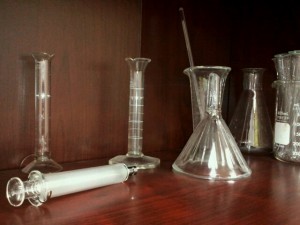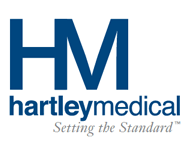 I recently returned from the 2nd Annual Targeted Drug Delivery for Pain and Neurological Disease Conference at the InterContinental Mark Hopkins Hotel in San Francisco, CA. Hosted by Dr. Eric Grigsby, this year’s conference covered the future treatments of Alzheimer’s Disease, neuropathic pain, Parkinson’s Disease, brain tumors, and epilepsy by implanted drug devices. I was excited to seize the opportunity to interact with some pioneers of the intrathecal drug world, such as: Eric Buchser, Robert Levy, Luc Jasmin, Lisa Stearns, Lawrence Poree, Steve Adler, Pete Lord, Richard Penn, and, of course, Eric Grigsby. Education is imperative to me, and these prestigious occasions present some of the greatest opportunities to learn about the future of intrathecal therapies ““ valuable insight that cannot be gained elsewhere.
I recently returned from the 2nd Annual Targeted Drug Delivery for Pain and Neurological Disease Conference at the InterContinental Mark Hopkins Hotel in San Francisco, CA. Hosted by Dr. Eric Grigsby, this year’s conference covered the future treatments of Alzheimer’s Disease, neuropathic pain, Parkinson’s Disease, brain tumors, and epilepsy by implanted drug devices. I was excited to seize the opportunity to interact with some pioneers of the intrathecal drug world, such as: Eric Buchser, Robert Levy, Luc Jasmin, Lisa Stearns, Lawrence Poree, Steve Adler, Pete Lord, Richard Penn, and, of course, Eric Grigsby. Education is imperative to me, and these prestigious occasions present some of the greatest opportunities to learn about the future of intrathecal therapies ““ valuable insight that cannot be gained elsewhere.
I particularly enjoyed a dual-lecture given by Dr. Tony Yaksh on spinal injections, including drug distribution and innovative new treatment regimens within the intraspinal space. His review of the historical progression of spinal injections included the history of the formal discovery of the nervous system, and such milestones as Descarte’s 1864 discovery of afferent nerves ““ which give our bodies the ability to convey stimulation to the brain ““ and the discovery of pain sensation in 1868. He also discussed Jackson Corning, who performed the first epidural in 1885, and Augustus Bier, who administered the first intrathecal injection using cocaine in 1899. Dr. Yaksh successfully illustrated how, in a matter of years, research of the intraspinal space had circled the globe. News of these breakthroughs was quick to spread around the world, and was a driving catalyst in bringing us to a lot of what we know today.
It was his mentioning of Herman Luer, however, that really excited me. In 1869, Herman Luer developed two distinct tapering systems for making leak-free connections for syringes and needles: Luer Slip and Luer Lock. This topic captivated me because I grew up utilizing Luer Lock syringes for the administration of parenterals; I even have a glass Luer Lock syringe on display in Hartley Medical’s conference room. I appreciate and respect the impact this truly amazing discovery has made on the medical world, as it is something that is still widely used.
Dr. Yaksh furthered his discussions by including his research on the spinal delivery of viruses to unique receptor sites. The spinal delivery of a virus to incorporate DNA to a targeted protein in spinal cells is termed: transfection. According to the doctor, viruses can be introduced intraspinally to specific proteins, delivering a “message” to them. This protein then creates a compound that can produce neuromodulation and treat pain. The concept of affecting certain proteins, which in-turn modulates nerve conduction, is called Transcription Factor Regulation (TFR). Dr. Yaksh added that new therapies, such as TFR, are quite promising due to a “target rich” environment.
Dr. Yaksh also discussed the intraspinal administration of resiniferatoxin (RTX) ““ a very potent analogue of capsaicin ““ a topic that I became aware of about seven years ago. RTX is derived from the Euphorbia resinifera plant. It interacts with a TRPV-1 receptor in afferent nerves to produce prolonged analgesia. The doctor mentioned a clinical study conducted by Dorothy C. Brown, DVM, et al that demonstrated significant pain relief in companion dogs diagnosed with bone cancer. He ended this topic by stating that the National Institutes of Health (NIH) is currently partnered with Brian Jones of Sherrington Pharmaceuticals to perform advanced research through human trials. Dr. Yaksh finished his lecture by acknowledging the advanced research and publications of the late, great Christopher Bernard and his contribution to advancing the treatment of pain and understanding neuromodulation. For more information regarding this clinical trial, click here.
Another stimulating aspect of the conference was the Current Intrathecal Therapy for Pain and Neurological Disease lecture given by Dr. Eric Grigsby. During this presentation, Dr. Grigsby reviewed the overall scope of various health conditions that are being treated by either neurostimulation or intrathecal drug delivery. His focus was on the specific conditions themselves, such as: intrathecal drug delivery for failed back surgery syndrome, axio-somatic conditions, arachnoiditis, visceral pain, and head and neck pain. He went on to dissect the demographics of his patients, which consists of roughly 55 percent failed back surgery, 15 percent neuropathic pain, 3 percent spasticity, and 20 percent mechanical pain. He discussed many areas of drug therapy innovations and technologies that are used to deliver drugs intraspinally for the treatment of these conditions, the types of infusion pumps available, pharmaceuticals that are FDA-approved for intraspinal use, and reviewed catheter locations for optimal drug delivery.
Dr. Grigsby concluded his presentation with an overview of the intrathecal market. According to the doctor, there are 23-45 million people suffering from chronic pain, and there seems to be a “manpower deficit” to treat these patients due to the lack of practitioners available to provide pain management treatments. The information that Dr. Grigsby presented truly enlightened the audience to both the complexities of, and opportunities for, the intrathecal market. I look forward to more conversations and discussions with him in the future.
During a lunch-time session, Michael Grundman and Mikhail Papisov, representatives from NeuroPhage Pharmaceuticals, gave a fascinating presentation on the intrathecal delivery of a macro-phage NPT002 for the treatment of Alzheimer’s Disease. This topic, which covered the delivery of a bacterial macro-phage derived from E. coli, discussed studies of a macro-phage being introduced into the cerebral zones of the brain that are affected by the progress and pathophysiology of Alzheimer’s Disease. This particular macro-phage has an affinity for amyloid-beta plaque, which causes disease and death. Initial studies using NPT002 ““ an M13 bacteria-phage ““ showed promising results for the treatment of Alzheimer’s. These studies required the use of rhesus monkeys to demonstrate intraspinal infusions achieving cerebral penetration. Such fascinating imagery of drug traveling from the intraspinal space into the brain was obtained using a combination of CT scans and MRIs.
The study sites are still expanding ““ at the time of the presentation they had only six sites ““ but it was expressed that there is a small population eligible for this treatment. On average, there were roughly 10 patients per cohort of study. More needs to be researched in this particular area ““ but it shows a lot of promise and hope.
Once again, another intriguing, educational, and absolutely unforgettable pain meeting. A must attend for next year as well.
It is always a pleasure hearing some of the greatest medical minds speak on the topics for which they are passionate, and it is inspiring to see the support of various people and organizations within the industry. I must give thanks to the people of Medtronic ““ Linnea Burman, Julie Foster, Linda Page, Lisa Marseilles and others ““ that I was able to re-connect with at this conference. I greatly appreciate all the support that your organization brings to the world of intrathecal pain management. And a special “Thank you!” to Samantha Ryan and Dr. Eric Grigsby of Neurovations for organizing such a remarkable meeting.
For more drug information and conference recaps, visit Hartley Medical’s Knowledge Center by clicking here.
Source:
Physiologic and Antinociceptive Effects of Intrathecal Resiniferatoxin in a Canine Bone Cancer Model. Dorothy Cimino Brown, et al. Anesthesiology 2005; 103:1052″“9.


Greeting from across the world. precise blog I will return for more.